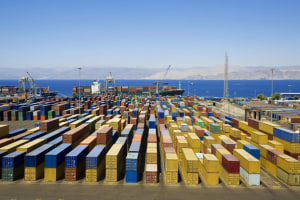Boyan Slat is Generation Next in more ways than just his age. Just twenty years of age, Slat is the founder and chief executive officer of The Ocean Cleanup. And the passive cleanup concept for collecting plastic waste from the ocean, which he developed from 2011 to 2012 and finessed with an international team of 100 scientists and engineers from 2013 to 2014, has been deemed to be 'likely a technically feasible and financially viable' method to clean up in ten years' time half of the Great Pacific Garbage Patch (the largest concentration of plastic of the world's five gyres).
More importantly, it is moving towards being a reality. Its subsequent crowd funding campaign raised more than $2 million by September 2014. The pilot phase began in October, and the first array is expected to be operational within a year. While the pilot is being built, the foundation is hosting a series of expeditions to collect additional oceanographic data.
This is the story of the Ocean Cleanup project.
The problem: The Ocean Cleanup foundation estimates that the oceans contain 500,000,000 kilograms of plastic, and that each gyre holds up to millions of pieces of plastic. These concentrations are intensely harmful to sea life. Greenpeace estimates that each year more than a million seabirds and 100,000 marine mammals and sea turtles die after eating or becoming entangled in ocean-borne plastics. In addition, waste-related toxins transmitted through the food chain pose a risk to human health.
The solution: The Ocean Cleanup's solution involves three processes.
1. Extraction: Why not use the ocean's natural winds and currents?
A strategic array of floating barriers first catches and concentrates the debris, enabling a platform to extract the plastic efficiently afterwards. The cleanup structures will include a conveyor and pump system to transfer collected plastic out of the water. Ships will pick up the waste and transport it back to land for recycling or environmentally responsible disposal. This will remove almost half the plastic from the North Pacific Garbage patch in 10 years, while being an estimated 7900x faster and 33x cheaper than conventional methods. The Ocean Cleanup is now working towards a large scale operational pilot in 3 to 4 years’ time.
Importantly, the solid floating barriers – unlike nets - capture plastics, not sea life.
Virtually all of the current flows underneath these booms, taking away all (neutrally buoyant) organisms, and preventing by-catch, while the lighter-than-water plastic collects in front of the floating barrier.
2. Prevention: Prevention is an essential part of stopping plastic pollution, but will require radical changes in all levels of society. The Ocean Cleanup aims to assist with these efforts by stressing its importance, and by raising awareness about the problem and its solutions.
3. Interception: Stop plastic before it reaches the oceans. The Ocean Cleanup plans to develop spin-offs from the passive collection technology for river deltas and other waterways that transport plastic to the oceans. This should provide a rapid reduction of the influx of new plastics into the oceans.
Read The Ocean Cleanup project feasibility study.





